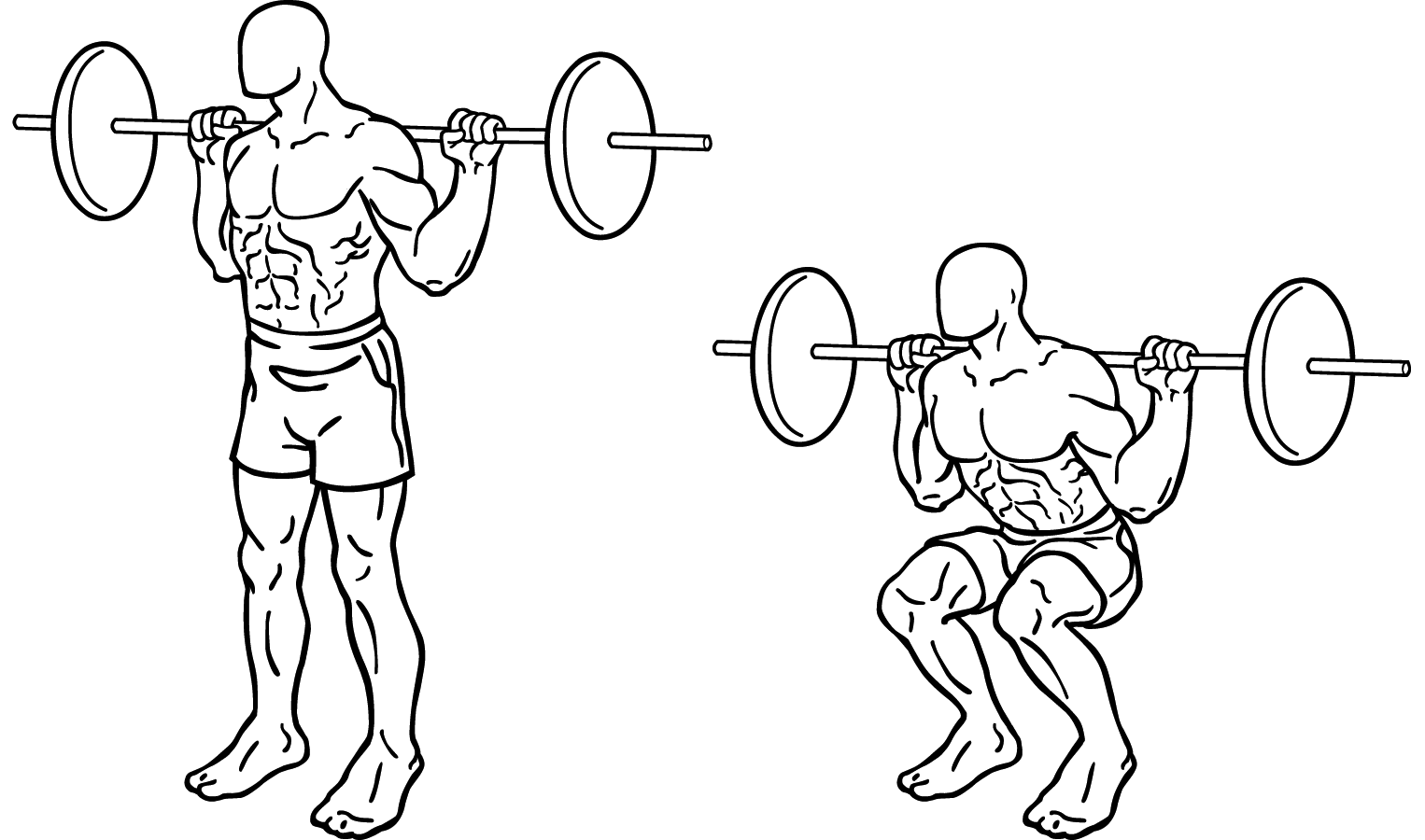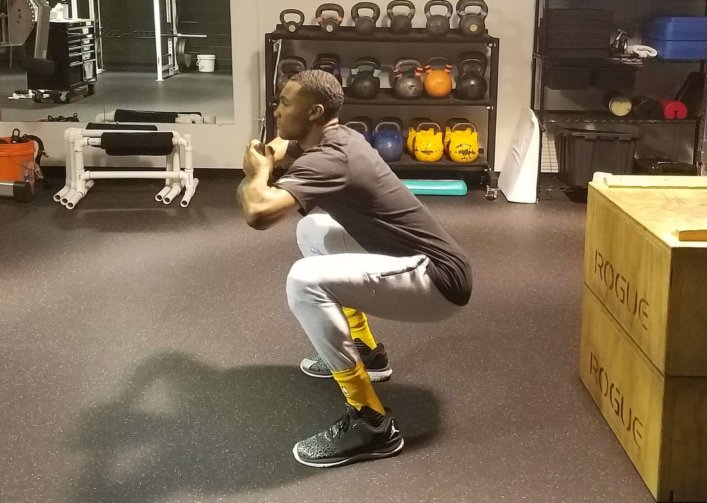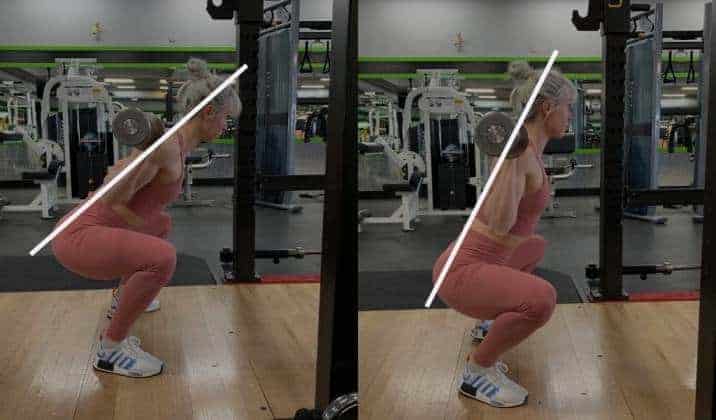Have you ever wondered if being tall makes certain exercises more difficult? Well, one exercise that often comes to mind is the squat. As a tall person, you may find yourself questioning whether your height affects your squatting abilities. In this guide, we will delve into the topic of whether squatting is harder if you’re tall and provide some helpful tips for tall individuals looking to improve their squatting technique.
When it comes to squatting, height can indeed play a role in the difficulty level. As a taller individual, you may face some unique challenges during squats, such as longer limbs and a higher center of gravity. These factors can affect your balance and stability, making it harder to maintain proper form throughout the exercise. However, while being tall can present initial difficulties, it doesn’t necessarily mean you can’t excel at squatting. In fact, by understanding the specific challenges you face and implementing the right strategies and modifications, you can overcome these hurdles and still achieve great results in your squatting journey.
In the upcoming article, we will explore some of the reasons why squatting may be harder if you’re tall and provide you with valuable tips and techniques to improve your form and maximize your squatting potential. Whether you’re a beginner or an experienced lifter, this guide is designed to help you understand how your height impacts your squatting abilities and empower you to make the necessary adjustments for success. So, stay tuned and get ready to unlock your full squatting potential, no matter how tall you may be!

The Challenges of Squatting for Tall People
Increased Range of Motion
If you’re a tall person, you may find that squatting poses certain challenges that shorter individuals might not have to deal with. One of the primary challenges is the increased range of motion required for a proper squat. Due to longer limbs, taller people have to descend lower in order to squat to parallel or below. This can put added stress on the muscles and joints, making it more difficult to maintain proper form throughout the movement.
Difficulties with Balance
Another challenge for tall individuals when it comes to squatting is maintaining balance during the exercise. Taller individuals tend to have a higher center of gravity, which can make it trickier to stay centered and prevent the weight from shifting too far forward or backward. This can result in a loss of balance and potentially lead to injury if not corrected.
Pressure on the Lower Back
Tall individuals may also experience increased pressure on their lower back while squatting. This is because the longer limbs and larger body frame place more strain on the lower back muscles. If proper form is not maintained, this pressure can cause discomfort or even lead to chronic low back pain over time.
Tips for Tall People to Improve Squat Form
Foot Positioning
When it comes to squatting, proper foot positioning is crucial for individuals of all heights. For tall people, a wider stance may be beneficial to accommodate the longer limbs. Placing the feet slightly wider than shoulder-width apart can help distribute the weight more evenly and provide a more stable base for the squat.
Bar Placement
Proper bar placement can also greatly improve squat form for tall individuals. Placing the barbell too high on the back can exacerbate the already increased range of motion required for tall squatters. Instead, try positioning the barbell lower on the back, across the posterior deltoids and upper back muscles. This lower position can help maintain a more upright torso, reducing strain on the lower back.
Hip Mobility Exercises
Tall individuals often struggle with limited hip mobility, which can impact squat form. Incorporating hip mobility exercises into your routine can help improve your range of motion and make squatting more comfortable. Some effective exercises include hip flexor stretches, deep squats with a pause at the bottom, and hip circles.

Importance of Proper Squat Technique for Tall Individuals
Avoiding Knee Pain
Proper squat technique is essential for tall individuals to avoid knee pain. With the increased range of motion required, tall individuals need to ensure that their knees are properly aligned and tracking in line with their toes throughout the movement. If the knees collapse inward or track too far forward, it can put excessive stress on the knee joints, leading to discomfort or potential injury.
Building Lower Body Strength
Squats are a fantastic exercise for building lower body strength, regardless of height. For tall individuals, focusing on proper squat form and technique can help target the intended muscles and promote optimal muscle activation. Building lower body strength through squats can improve athletic performance and overall functional fitness.
Preventing Injury
Proper squat technique is crucial for tall individuals to prevent injury. With the added challenges and potential strain on the joints and muscles, maintaining proper form becomes even more important. This means avoiding rounding the lower back, maintaining a neutral spine, and keeping the weight evenly distributed throughout the movement. Failing to do so can result in injuries such as muscle strains, herniated discs, or knee problems.
Adjusting Squat Depth for Tall Individuals
Finding Optimal Depth
Finding the optimal squat depth is essential for tall individuals to ensure proper form and prevent injury. While squatting below parallel is generally recommended for most individuals, tall squatters may find it challenging to reach that depth due to their longer limbs. It’s important to prioritize finding a depth that allows you to maintain proper form, rather than trying to go excessively low. Experiment with different depths to find what works best for your body and flexibility.
Working with Flexibility Limitations
Flexibility limitations can also impact squat depth for tall individuals. Tight hip flexors, hamstrings, or ankles can make it challenging to achieve the desired range of motion. Incorporating regular flexibility and mobility work into your routine can help improve your mobility and make squatting more comfortable. Stretches for hip flexors, hamstrings, and ankle mobility exercises can be particularly beneficial for tall squatters.

Using Equipment for Tall People’s Squatting
Using Elevated Heel Shoes
Elevated heel shoes can be a game-changer for tall individuals while squatting. These shoes have a raised heel, which can help improve ankle mobility and allow for a more upright torso. The elevated heel helps compensate for any ankle tightness or limited dorsiflexion, making it easier to maintain proper form and depth throughout the squat.
Utilizing Squat Racks and Safety Bars
Squat racks and safety bars can provide added security and support for tall individuals during squats. Tall individuals often have to squat deeper than their shorter counterparts, and having the safety bars set to the appropriate height can provide peace of mind in case of fatigue or loss of balance. Additionally, squat racks contribute to better stability and can help maintain proper form throughout the exercise.
Common Mistakes and How to Avoid Them for Tall Squatters
Rounding the Lower Back
One common mistake tall individuals make while squatting is rounding the lower back. This can happen when a tall person struggles to maintain a neutral spine throughout the movement due to the additional strain placed on the lower back. To avoid this, focus on engaging your core, keeping your chest up, and maintaining a slight arch in your lower back. Strengthening your core through exercises like planks, deadbugs, or Russian twists can also help prevent rounding of the lower back during squats.
Leaning Forward
Another frequent error is leaning forward excessively during the squat. This can occur when tall individuals try to compensate for the increased range of motion and balance difficulties. To correct this, concentrate on keeping your chest up and driving your hips back as you descend into the squat. Engaging your glutes and hamstrings can help maintain the correct torso position and prevent leaning forward.
Valgus Collapse
Valgus collapse, or the knees collapsing inward, is a common mistake made by tall squatters. This can be particularly problematic due to the increased stress it places on the knee joints. Pay close attention to your knee alignment during the squat and actively push your knees outwards, in line with your toes, throughout the movement. Strengthening the muscles of the hips, such as the glutes and abductors, can help prevent valgus collapse and promote proper knee alignment.

Methods to Enhance Squatting Performance for Tall People
Incorporating Resistance Bands
Incorporating resistance bands into your squat routine can be highly beneficial for tall individuals. Resistance bands can provide additional resistance at the bottom of the squat, where it is typically more challenging. This can help target the muscles more effectively and promote muscle activation. Looping a resistance band just above the knees or using a band around your hips can enhance your squatting performance and strengthen the muscles responsible for proper squat form.
Employing Tempo Training
Tempo training involves controlling the eccentric (lowering) and concentric (rising) phases of the squat with specific timing. This technique can be especially helpful for tall individuals trying to improve their squat form and control. By slowing down the descent and ascent of the squat and focusing on proper form, you can enhance your stability, strength, and overall control in the movement.
Progressive Overload
Progressive overload is the gradual increase in weight, repetitions, or intensity over time. This principle is crucial for any strength training program, including squatting. By progressively increasing the weight you squat, you challenge your muscles and stimulate growth and adaptation. This helps tall individuals develop the strength necessary to overcome the challenges they may face while squatting.
Importance of Flexibility and Mobility Work for Tall Squatters
Stretches for Hip Flexors and Hamstrings
Flexibility and mobility work are crucial for tall squatters to improve their range of motion and optimize squat form. Stretching the hip flexors and hamstrings regularly can help alleviate tightness and improve mobility in these areas. Incorporate static stretches such as lunges, pigeon pose, or seated forward folds into your routine to target these muscle groups and enhance your squat performance.
Foam Rolling Techniques
Foam rolling is an effective technique for targeting tight muscles and releasing tension in the body. For tall individuals, foam rolling can be particularly beneficial for the muscles surrounding the hips, glutes, and quadriceps. By rolling out these areas before and after squatting, you can help reduce any muscle tightness or restrictions, ultimately improving your squatting experience.

The Role of Strength Training Beyond Squatting for Tall Individuals
Focus on Compound Movements
While squatting is a fantastic exercise for building lower body strength, it’s important for tall individuals to focus on a well-rounded strength training program. Compound movements such as deadlifts, lunges, and step-ups can target multiple muscle groups and help build overall strength and stability. Incorporating these exercises can help balance out the muscle development and improve functional fitness for tall individuals.
Incorporating Deadlifts and Lunges
Deadlifts and lunges are particularly beneficial exercises for tall individuals due to their ability to engage the posterior chain and improve hip mobility. Deadlifts, in particular, target the glutes, hamstrings, and lower back, which are areas that tall squatters may struggle with due to their longer limbs. Lunges, on the other hand, help improve balance, stability, and single-leg strength, which can contribute to better squat performance.
Conclusion
In conclusion, squatting can indeed be more challenging for tall individuals due to increased range of motion, difficulties with balance, and pressure on the lower back. However, with the right techniques and adjustments, tall individuals can overcome these challenges and achieve proper squat form.
By focusing on foot positioning, bar placement, hip mobility exercises, and proper squat depth, tall individuals can improve their squatting experience and reduce the risk of injury. Additionally, incorporating equipment such as elevated heel shoes and utilizing squat racks and safety bars can enhance stability and support during squats.
Avoiding common mistakes, incorporating resistance bands and tempo training, and prioritizing flexibility and mobility work are all beneficial strategies to enhance squatting performance for tall individuals. Remember, proper squat technique is essential for tall individuals to avoid knee pain, build lower body strength, prevent injuries, and achieve optimal results from their strength training routine.




